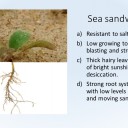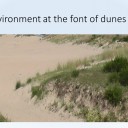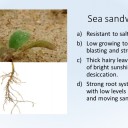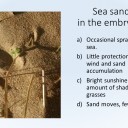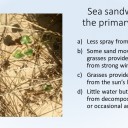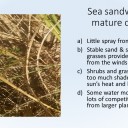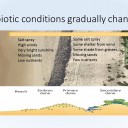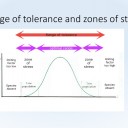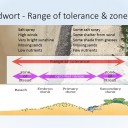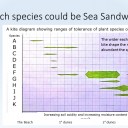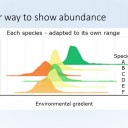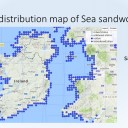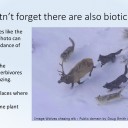Limits and zones lab
 This lesson begins by getting students to consider what it is like to be a small plant growing in some dunes. Understanding the needs of an individual illustrates the concepts of limits of tolerance and zones of stress. A practical online activity measuring the distribution of animals on a rocky shore is next followed by a field work exercise sampling plants on a dunes. There is a final simple data analysis activity, as well as some sample data for the rocky shore analysis.
This lesson begins by getting students to consider what it is like to be a small plant growing in some dunes. Understanding the needs of an individual illustrates the concepts of limits of tolerance and zones of stress. A practical online activity measuring the distribution of animals on a rocky shore is next followed by a field work exercise sampling plants on a dunes. There is a final simple data analysis activity, as well as some sample data for the rocky shore analysis.
Lesson Description
Guiding Questions
Why doesn't every species on Earth live everywhere on Earth?
Why don't we find monkeys in the Arctic or Polar bears in the Saraha desert?
Activity 1 - Limiting factors
Every species is adapted to a specific range of abiotic conditions outside of which they cannot survive. There are many abiotic factors and a mixture of limiting factors control the distribution of each species.
The principals of "limiting factors","limits of tolerance" and "zones of stress" apply to all species.
Use the following slides to explain these concepts.
Complete the worksheet ![]() limiting factors student questions as notes about these concepts.
limiting factors student questions as notes about these concepts.
Activity 2 - Transect Experiments
The best thing to do would be to go to a rocky shore ecosystem and to carry out a transect analysis of the zonation on the beach. The tide rises and falls every day and the amount of time the animals are exposed to the air changes very regularly as you go up the rocks from the low tide mark. This is a great environmental gradient and usually produces some clear zonation.
If you haven't the opportunity to visit a rocky shore ecosystem then one of the following simulations will be an interesting study of zones of stress and limits of tolerance in animal species.
Carry out this online rocky shore simulation
- Study the species which live on the rocky shore
- Read about the sampling methods used
- Look at the background information which explains;
- Carry out the Virtual Field study by analysing species abundance in 12 quadrats

- Analyse some data from the site - Average transect data from 11 school surveys
or as Average data as an Excel sheet
Carry out an in situ Rocky shore transect.
This is a simple protocol for a transect over some dunes. It could be used for rocky shore work too.
![]() Transect field work activity sheet.
Transect field work activity sheet.
Activity 3 - Data analysis activity
 A group of scientist were interested to see if there was a correlation between three species of plants on a set of dunes in Spain.
A group of scientist were interested to see if there was a correlation between three species of plants on a set of dunes in Spain.
Study the data in the following worksheet ![]() Dune transect student activity and answer the questions.
Dune transect student activity and answer the questions.
.
Teacher's notes
If you like the Sea sandwort you may be interested to know it was one the first of the higher plant species to colonise Surtsey (a new volcanic island) formed after the eruption of 1965. In the first spring after the formation of Surtsey, seeds washed up on the newly formed shore. For further information about this plant and others which have adapted and grown on this island, see www.surtsey.is from which this information was obtained.
There are model answers, which teachers can control student access to, on this page: Limiting factors - model answers
There is a really excellent slide show about Sand dune ecology from The Macaulay Institute here:
Story maps are great ways to explore Ecosystems of the world. One of the most thorough is the recent Global Ecosystems map from the US Geological society.
This study might be useful as the basis of some research about limits of tolerance.

 IB Docs (2) Team
IB Docs (2) Team


